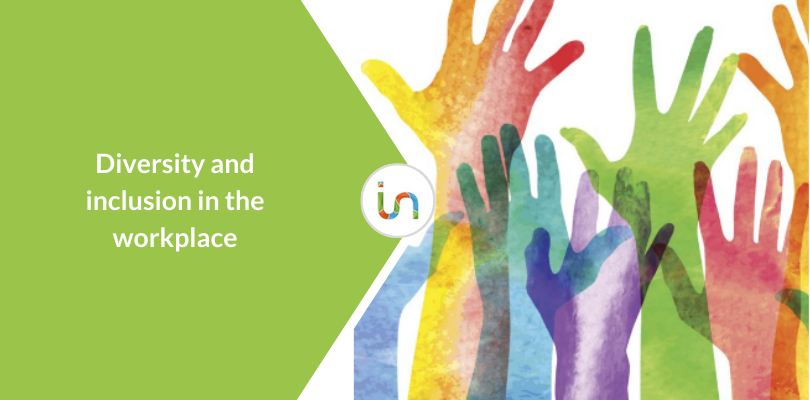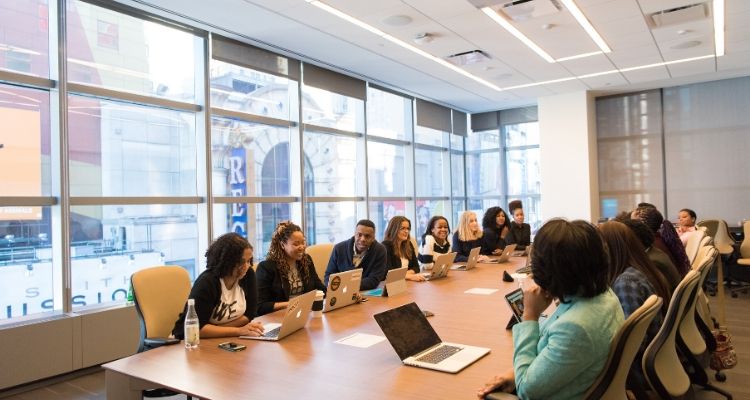
Diversity in the company and the role of Human Resources for inclusion
That diversity is a value is now an established definition in any industry, that it is in business contexts and workplaces is a concept we are coming to terms with in recent years. Managers are certainly coming to terms with it, and Human Resources is undoubtedly increasingly involved.
Also because, until some time ago, in the not too distant past, the direction was quite different: instead of valuing the differences between the various employees, collaborators, bosses, etc., there was a tendency to favor a business model that would cancel out these differences, perhaps by virtue of higher corporate values, recognized and become the foundation of the company for years. And if, perhaps, the concept of diversity connected to that of inclusion had made its appearance thanks to ad hoc laws such as the Equal Opportunities Law (Law 165/2001), providing for the inclusion of people with physical and mental disabilities in the company, on the other hand, there was and is still work to be done on the subject of diversity.
The concept of diversity is in fact a very broad one that does not only concern a type of person, but consists in accepting that in every age in which we live, every social group is marked by particularities and differences that may concern age, abilities as well as culture, but also ethnicity, sexual orientation as well as religious orientation and gender identity.
These are all aspects that, as we will see in this article, need to be carefully considered and that, if valued, not only allow for general moral enrichment, but also more inclusion and productivity for companies. Managing diversity and valuing it, in fact, as we were saying, has become increasingly important in the HR world, so much so that in some companies diversity management is a real approach that has taken on the name of diversity management.
What is diversity at work?
As we have said, we are talking about work teams in which people of different gender, religious or sexual orientation, ethnicity, age or physical and mental abilities coexist. However, different backgrounds, cultures and life experiences do not automatically generate value for a company. It is not enough for a team to be diverse, i.e. to have the richness that comes from diversity, for it to truly work in balance.

A diverse team works well when you start talking about inclusion and proceed in every way possible to implement it. What does it mean? It means that people feel included in the workplace so they are not discriminated against for who they are or embellished, they simply have the same opportunities as everyone else.
It is very important that this is taken into account starting from the selection process in which resources are involved, in view of the so-called candidate experience, and then continuing with the hiring process in which they are managed, trained, evaluated and rewarded. In short, it’s essential that inclusion goes hand in hand with diversity throughout recruitment.
This means that, in addition to offering equal opportunities to all employees, whether already hired or potential, procedures must be improved as needed to ensure that diversity is respected at every stage of recruitment.
Diversity and inclusion in the workplace
However, beware of talking about diversity and inclusion as if they were two sides of the same coin: it’s not enough, for example, to hire people of a different ethnicity or sexual orientation to increase diversity in the company and thus ensure inclusion.
Do these people really feel part of the company, do they feel like protagonists or are they relegated to a marginal role? And in order to feel equal to others, are they forced to conform or do they feel free to express themselves?
The same goes for pink quotas: establishing their hiring by law can certainly be praiseworthy and is a first step, but in order to talk about inclusion, companies must be guided by the merit of women and their way of working.
A similar argument must be made for a company that demonstrates support for motherhood. There are those who allow children to be brought into the workplace, those who organize theatrical performances for children or the Christmas party, but it is also important to give mothers the opportunity to take advantage of teleworking or smart working, as well as keeping them constantly updated or organizing important meetings at times of the day that meet their needs as mothers.

Conversely, discrimination in the workplace can take very different forms. The 2020 Women in Tech report, published by TrustRadius, for example, shows some interesting data on the subject. Women who participated say they really feel excluded in the tech world, and this is both because they are paid less than their male colleagues (even less experienced ones) and based on the general culture in the office that openly favors men. Similar attitudes, mixed with the belief that some jobs are strictly for men, fuel prejudices and judgments that are difficult to eliminate and are often rooted in work contexts as well.
Multigenerational teams and gender gaps
Discrimination between men and women obviously does not only concern salaries, but also career opportunities, access to certain benefits or the possibility to do certain jobs. It often happens that women who are mothers of 2 or 3 children are not assigned leadership roles because they are not expected to be available at certain times or are asked to adopt male models.
Yet those who are mothers, as both a book and an actual “Maternity as a Master” program show, acquire skills that others do not have. We’ll mention just a few, for the rest we’ll refer you to the program as well as to the book: resilience, the ability to mediate between very different people, the ability to know how to manage time better than others, having to make the most of every minute, as well as concreteness and much more. A team that includes women, appreciates them for their diversity and does not want to standardize them acquires richness and grows.

The same applies to so-called multigenerational teams. Much more than in the past, in companies, teams are formed by people who have a very significant generational gap, not only from the point of view of age, but also in their way of understanding work and seeing the company.
According to a study on Employee Engagement, conducted by Dale Carnegie Training and reported by Il Sole 24Ore, the over-50s, for example, feel much more involved than others in the workplace, as do the so-called Baby Boomers, those born between 1945 and 1960 who have a fairly high degree of involvement, despite being close to retirement. Perhaps because of the years they have dedicated to their work, or perhaps because they fear that in retirement they will have nothing more to prove, these resources are very tied to the company.
The case of the so-called Generation X is different, namely those born between the 1960s and 1980s, who show less involvement with the company, probably because of the point they have reached in their lives or because of other personal aspirations. Even if, as the study by Dale Carnegie shows, this could be due to the fact that those who are between 40 and 49 years old, are already at the peak of their careers and having experienced, in particular those born in the 1970s, situations of great instability and precariousness, are less inclined to tie themselves to the company. Not to mention the so-called Millennials, those born between the 80s and 2000.
For them, the world was born with the Internet, it was born with social media, they grew up with smart working and they are more used to choosing the workplace where they are best, where they can be valued, where they can grow and where it is possible to work in mobility, also thanks to the use of technology, rather than looking at salary and benefits. For them, much more so than those close to retirement, terms such as remote working or smart working are the order of the day, as is working without fixed hours but according to objectives.
Millennials are also very attracted to a company’s value proposition, and if they are comfortable with it, they are inclined to become brand ambassadors and spokespersons for employee advocacy, thus putting values and organizational flexibility before profit culture.
It goes without saying that multigenerational teams are an asset from a diversity perspective, but you have to know how to manage them. Adapting the same business model for everyone, when there are very different specific needs, may not be the right choice and goes against that inclusion we talked about earlier.
It is important to identify different working styles and communication methods, understand the differences and attitudes, and create teams that can move forward precisely because of their diversity. Those who are younger will be able to mentor those who are older regarding certain technologies, and those who are older will be able to give their insight to those who are less experienced.
At the same time, however, as we were saying, it is important to have recognition that compensates for the different expectations of the various generations.
What HR can do about diversity
Here’s what HR can do to foster diversity and inclusion in the workplace. First of all, start by removing prejudices in recruitment.
The Law on Equal Opportunities is clear, but not always applied: in job postings neither age nor gender should be indicated, but job descriptions should be written that are as neutral as possible so as to make the candidate experience a moment in which all aspiring candidates can feel at ease. The hiring process with the interview questions should also go in that direction with the goal of finding the best people for the job, based on their skills, and not by “likes.”
It would also be good to keep track of how you are performing to see if there is room for improvement and progress being made. For example, an ATS software program such as In-recruiting can help you keep track of the people you have met, the aspects that impressed you, as well as how you found a particular profile later.
Software could also help with data on various multigenerational teams, the presence of people with disabilities as well as keeping track, especially if you work in a large company, of how many women occupy leadership roles and how to consider various degrees of diversity (not just related to gender, race, but also age).
HR then has another role, one that goes beyond recruitment. They must strive to build a company that is diverse, and they can’t do it alone; they must involve their team members first and at the same time those in senior roles. They must try to lay the groundwork for a culture of diversity to become a predominant part of the company culture.
They must also engage employees, regardless of seniority, role or otherwise, so that they can all understand the importance of diversity and how to manage it. At the same time, it is important to provide training on diversity, implement policies that are shared and ensure that everyone is aware of the expectations, values and behaviors with a view to mutual respect and acceptance.
Why create an inclusive environment
We’ve mentioned it in part: not only in terms of moral richness, but also because it makes the company more productive.
This is said by the numbers of the Diversity Brand Index 2019 that give an overview of diversity in Italy, highlighting how one in 4 companies is really committed to this point of view. Moreover, brands perceived as more inclusive also influence people’s purchasing choices: according to the numbers, 51% of people choose them, as well as 23% prefer brands that invest in Diversity & Inclusion. Moreover, 3 out of 4 people are sensitive to the message of inclusiveness of brands.
Then, as far as growth is concerned, in 2019, brands that invested on Diversity & Inclusion grew by 20% with word of mouth increased by 85.1%.
As you can see, the reasons to focus on diversity are really many. And all very valid.

Giornalista, content strategist e formatrice
Siciliana trapiantata a Milano, città che ama molto come la sua terra. Giornalista, SEO copywriter, formatrice e amante del live tweeting, scrive per varie testate e blog aziendali di lavoro, risorse umane e tanto altro.
Ha scritto nel 2020 il suo primo libro “Scrivere per informare” insieme a Riccardo Esposito, edito da Flacowski e nel 2021 altri due: “L’impresa come media” e “Content marketing per eventi“.
Ama il mare, la bici, la pizza, i libri, le chiacchiere all’aperto.